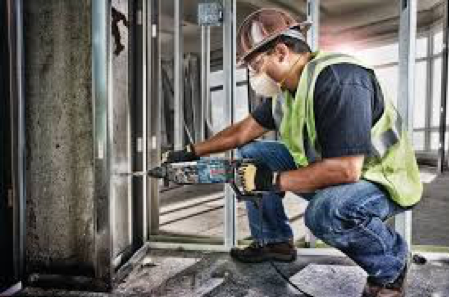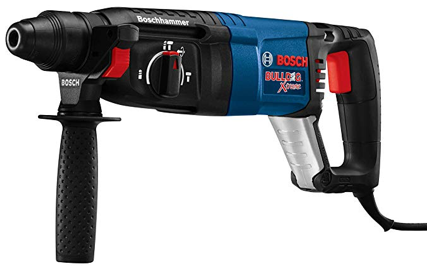Rotary Hammer
By Carl Hohman

Sure, anyone can drill a hole or two in a concrete block with a regular drill and a masonry bit, but you’ll want to step it up a notch if you have a whole bunch of holes to drill! A rotary hammer drill is a power tool that can perform heavy-duty tasks such as drilling and chiseling of hard materials. It is similar to a hammer drill in that it also pounds the drill bit in and out while it is spinning. However, rotary hammers use a piston mechanism instead of a special clutch. This causes them to deliver a much more powerful hammer blow, making it possible to drill bigger holes much faster.
WHAT’S THE DIFFERENCE BETWEEN A HAMMER DRILL AND ROTARY HAMMER DRILL?
We are frequently asked to give the lowdown on the differences between a hammer drill and a rotary hammer drill. Hammer drills and rotary hammers both produce a pounding force that makes them both extremely efficient at blasting through any time of stone or masonry. As the hammer drill spins, the bit chisels away at the any give hard surface. The mechanical process that delivers this pounding action is what separates the two tools. Rotary hammers use a piston mechanism instead of a special clutch. Rotary hammers are also more powerful and have “hammer only” mode with no rotation.
INSIDE A ROTARY HAMMER DRILL

A rotary hammer creates its pounding action with a piston driven by a crankshaft. The piston rides in a cylinder and creates air pressure when driven forward, and it’s the air pressure that actually drives the hammer mechanism. Rotary hammers provide a lot more impact energy than hammer drills. Rotary hammers are much more powerful and they’re more durable and are the preferred tool of the pros. And they usually have an SDS chuck, which is better for hammering as bits stay far more secure. Another big advantage of the rotary hammer is that most have three settings: drill mode, hammer drill or just hammer, so they can act as a mini jackhammer. Rotary hammer drills have an oil filled gearbox, which allows them to operate durably despite the large forces and shocks they receive and the grit-filled environments where they are most often used.
